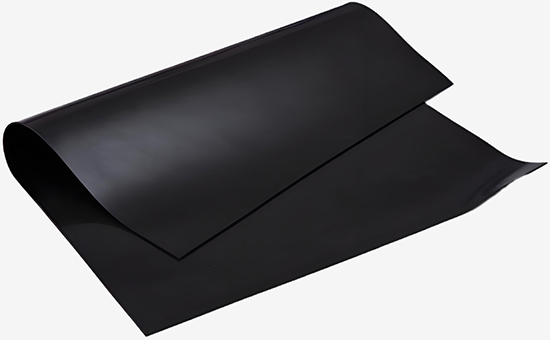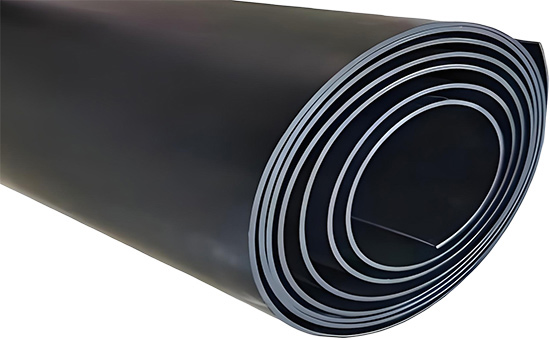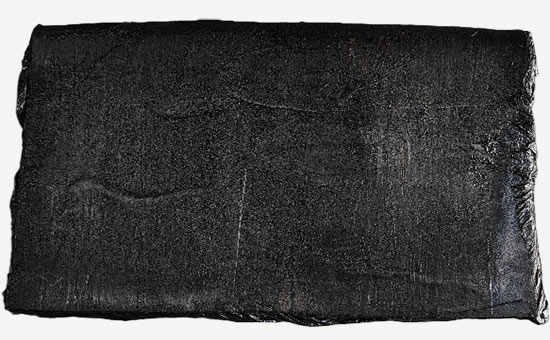
Oil-resistant rubber plates are generally processed with oil-resistant rubber as the main raw material, which is not easy to swell and maintain good mechanical properties when used in oil media for a long time. Nitrile recycled rubber retains the basic performance characteristics of nitrile rubber, has excellent oil resistance, and can be used alone or with nitrile original rubber to produce oil-resistant rubber plates, effectively reducing the cost of raw materials. When using nitrile recycled rubber to produce oil-resistant adhesive plates, vulcanization system design is crucial.
When using nitrile recycled rubber to produce oil-resistant adhesive plates, the cross-linking density, cross-linking bond type, and acrylonitrile content all affect the oil resistance of the rubber.
1. Effect of cross-linking density on the oil resistance of nitrile recycled rubber sheet
With the increase of cross-linking density, the intermolecular force of rubber increases, and the free volume in the network structure decreases, which has the advantage of difficulty in oil diffusion.
2. The effect of cross-linking bond type on the oil resistance of nitrile recycled rubber sheet

The effect of cross-linking bond type on oil resistance is closely related to the type and temperature of the oil.
When nitrile oil-resistant rubber board is used in oxidizing fuel oil for a long time, nitrile recycled rubber vulcanized with peroxide or semi-effective vulcanization system has better oil resistance than sulfur vulcanized glue. Nitrile recycled adhesive E5LYY41 peroxide vulcanized is highly stable at 40°C but less ideal in oxidized fuel at 125°C. Nitrile butadiene rubber vulcanized by cadmium oxide and sulfur feeding system has good long-term hot oil aging performance in oxidized fuel at 125°C.
3. The effect of acrylonitrile content on the oil resistance of nitrile recycled rubber oil-resistant rubber board
The oil resistance of nitrile rubber and nitrile recycled rubber increased with the increase of acrylonitrile content. When the sulfur vulcanization system is used for nitrile oil-resistant rubber board, the amount of sulfur is 1.5-2.5 parts, and the amount of sulfur can be reduced when the content of acrylonitrile is high.
4. The relationship among the vulcanization system and the oil resistance and cold resistance of nitrile recycled rubber oil-resistant rubber board

In actual production, only changing the vulcanization system has little effect on the oil resistance of nitrile recycled rubber vulcanized rubber, but has a greater impact on the cold resistance of vulcanized rubber. The sulfur vulcanization system has a high vulcanization temperature and poor cold resistance. The vulcanization temperature of nitrile recycled adhesive prepared by DCP vulcanization system and DCP with a small amount of sulfur system has low vulcanization temperature and good cold resistance.
It should be noted that the vulcanization rate of the DCP system is slow, and the comprehensive performance of the vulcanized rubber is not as good as that of the DCP plus a small amount of sulfur system, so it is recommended to use DCP plus a small amount of sulfur vulcanization system when using nitrile recycled rubber to prepare oil-resistant rubber plates used under low temperature conditions.
When using nitrile recycled rubber to produce oil-resistant rubber sheets, it is not only necessary to design the vulcanization system reasonably, but also to choose the appropriate reinforcing filler and softening plasticizer, and have the opportunity to continue to discuss related issues with you.
Exclusive original article [commercial authorization] reprint, excerpt and excerpt in any form are prohibited without written authorization. Focus on Hongyun rubber: learn the process formula and raw material technology of producing rubber products from recycled rubber to help you reduce costs and increase profits